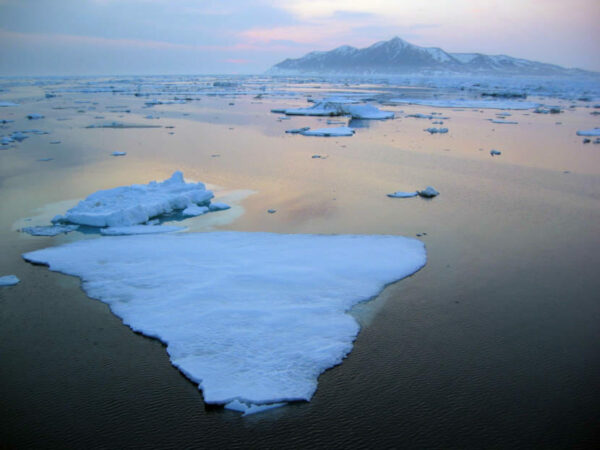
Fairbanks climate researchers teamed up with Juneau composers to turn data into music. It’s a bid to bring climate research to a new audience.
Listen to this story:
When Juneau composer and middle school music teacher Michael Bucy first saw the climate data he had to turn it into a song, he said he couldn’t make sense of the symbols.
“I didn’t get out of my algebra II class in high school,” he said with a laugh.
That’s a pretty normal reaction to the codes used in climate modeling. Bucy was looking at data sets showing warming temperatures in the Bering Sea. And his initial response is part of why he and fellow composers attempted to translate the ideas behind the numbers into the more approachable medium of music.
“To be honest, climate change has actually been just too overwhelming for me to address. It’s one of those things that … I think we all somewhat put our heads in the sand just for survival sake … because it’s just too, too overwhelming to think about too much,” he said.
Bucy wrote “Babel 2.0,” which was performed in Juneau last month, with additional help from a writer friend who took care of the lyrics. The name is a biblical reference—prideful men attempt to build a tower to heaven, so their god gives them all different languages so they can no longer work together.
[Sign up for Alaska Public Media’s daily newsletter to get our top stories delivered to your inbox.]
The science to music project is the brainchild of Kaja Brix, who directs the National Oceanic and Atmospheric Administration Fisheries Arctic Program in Alaska. She also works at the University of Fairbanks International Arctic Research Center. She said most climate talks reach the same audience over and over.
“I was reflecting on how we really need to think of other ways to bring information about changes in our state to the public in a way that people will be exposed to that science,” Brix said.
Bucy says his composition is an effort to aid what he considers some of the most important work in the world — he called it “music with a purpose.” But to get from science to music, he had to call professor Vladimir Alexeev at the International Arctic Research Center for a layman’s description of what was going on.
Alexeev has studied climate for 30 years, and he’s modeled recent warm temperatures in the Bering Sea and their effect on the rest of the world. He broke it down simply: “The warm water in Bering Sea makes air move differently.”
His model shows that unusually warm water in the Bering Sea pushed a column of warm air into the jet stream. That sent warm air up north into places like Fairbanks, and that sent cold air south where it doesn’t belong.
“It’s like a rock in the middle of the river. It sends ripples up and downstream,” he said.
Alexeev called it a “disaster.”
He says he suggested dissonant sounds and musical cycles that represent the seasons. He says the project made him think about his research in a new way.
Michael Bucy’s song is the first in what will be a series of about six pieces of music. The Bering Sea is just one theme. Other composers will interpret glacier outburst floods, high latitude mirages and arctic sea ice changes.
The goal is to hold concerts in Juneau and Fairbanks, but pandemic concerns have delayed the project.




